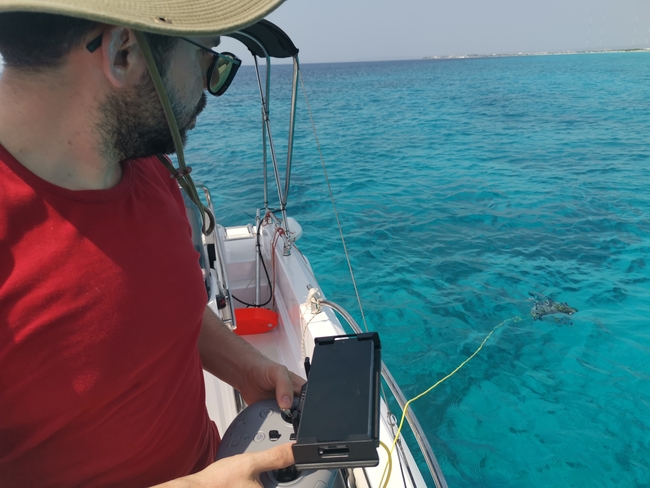A new method for shallow ecosystem assessment
Visual census is a common method used to monitor fish abundance in Marine Protected Areas (MPA) and coastal seas. Its reliance on human vision and sampling however presents many limitations. In this project, we aim to complement common visual census applications with an integrated toolbox composed of a Remotely Operated Vehicle (ROV) and a mobile hydroacoustic system. These are low-cost, non-invasive tools, suitable for coastal MPAs.
The combination of optical and acoustic sensors can cover wider areas and longer sampling time compared to traditional visual census. Further, it is possible to monitor deeper aggregations of fish and their day/night migrating behaviour through the research site and thus providing new scientific findings.
The integrated toolbox is able to detect mobile species including small and large demersal and pelagic fish, which are key resources for small-scale fisheries. The toolbox could thus enable MPA managers and scientists to improve accuracy in the estimation of fish abundance and biodiversity, ultimately facilitating sustainable fisheries management.
IMFACT will use the MPA of Bonaire as a case study, a well-established and functioning MPA in the Caribbean Sea. The project aims to assess and critically evaluate the scientific robustness and the added value of the proposed toolbox.
This will be measured in terms of its efficacy in addressing bias in traditional visual census, and in extending the capability to monitor fish in coastal areas into depth and in night conditions. The approach will be a novel method to be applied in coastal areas worldwide providing a unique and standardized way to monitor fish abundances in reefs and other tropical areas.
Download: Project report IMFACT
Romagnoni, G. and Dudeck, T. (2024). IMFACT - Integrated Monitoring of Fish Abundance using Combined Tools: Project Report. Leibniz Centre for Tropical Marine Research. https://doi.org/10.21244/zmt.2024.005





